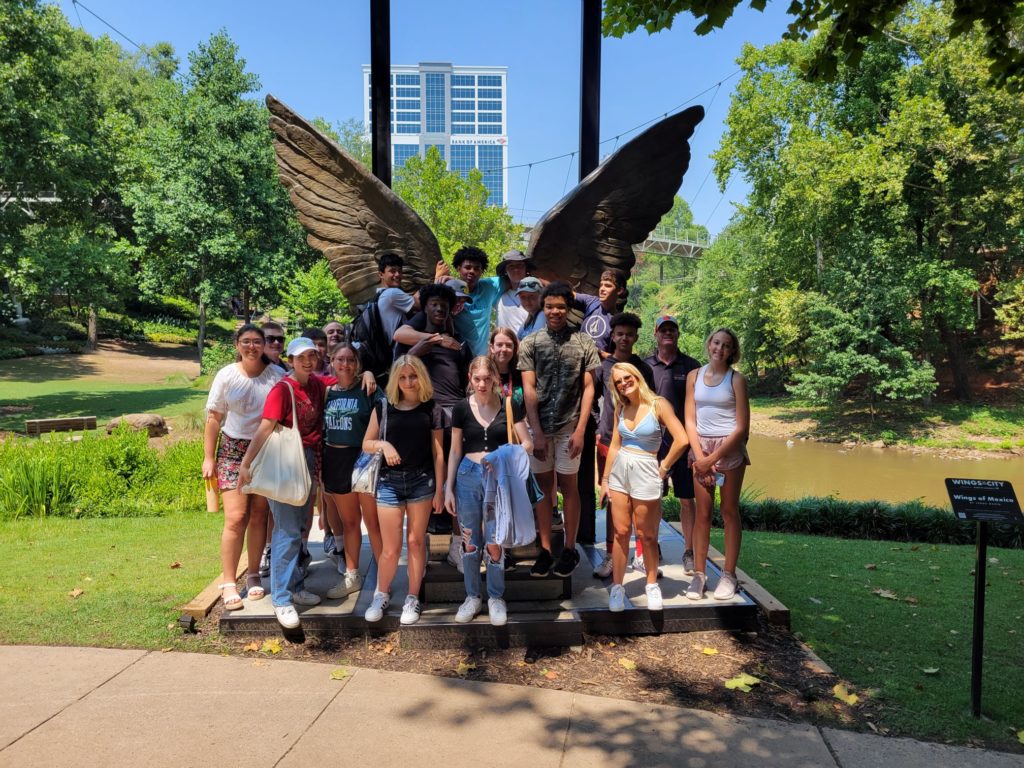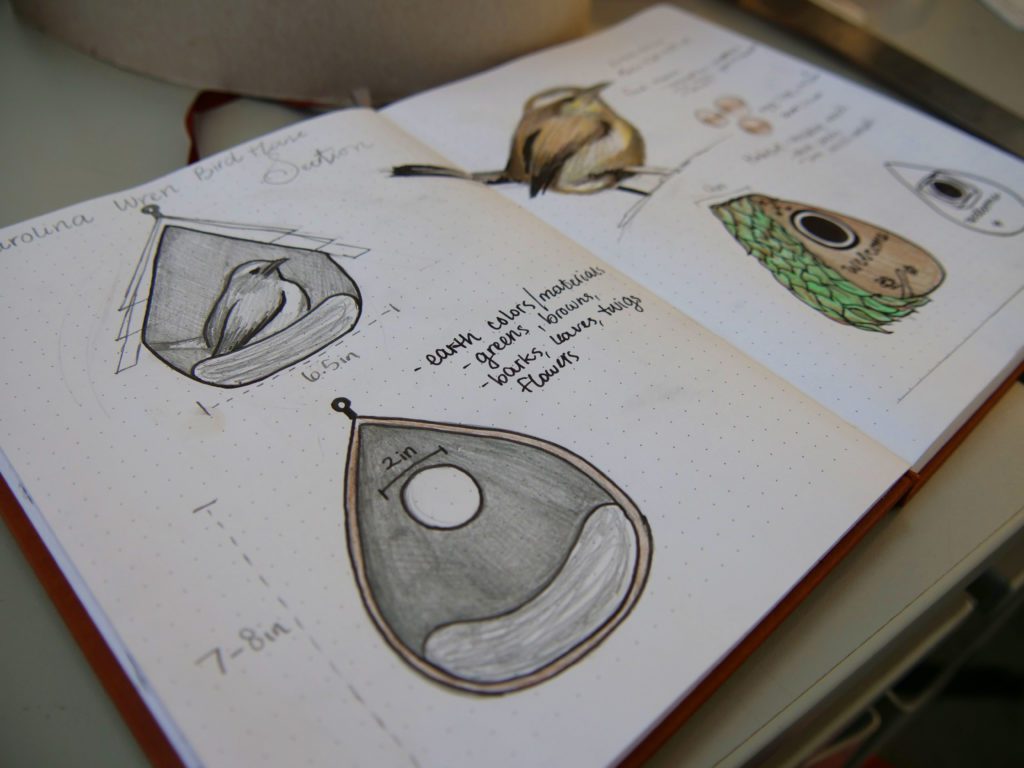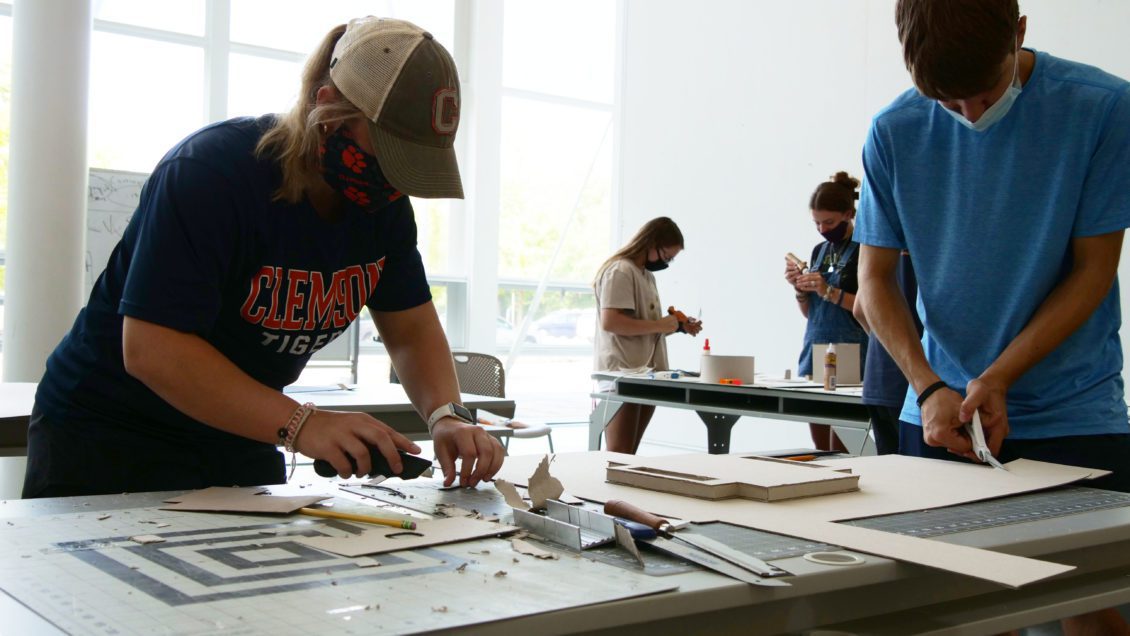Barrett Wilson, a rising high school junior from Marietta, Ga. has an evolving passion for design.
“At first I was interested in automotive design, and then I grew to like buildings a lot more as I traveled,” he explained. But as his interests changed, he ran into a problem.
“There were no, sort of, options to learn more or express my interest for it,” he said.
According to Matthew Powers, director of Landscape Architecture and undergraduate programs and associate professor in Clemson’s School of Architecture, Wilson’s struggle is common for teenagers gravitating toward careers in architecture and landscape architecture. Along with David Franco, associate professor of Architecture, Powers leads the “Designing the Built Environment” course in Clemson’s Summer Scholars program, which gives students in 7th-12th grade a chance to “try on” potential majors.
Even if you’ve never been here before, it almost just feels like you belong. It’s very easy to feel like home here.”
Gracie Floyd, Summer Scholars student
The scarcity of educational options for high school students in architecture—both among high schools and in colleges–has given the built environment course nationwide reach.
“Between this week and last week, we’ve had students from California, Texas, Washington, Oregon, Oklahoma, Massachusetts, Florida, and then of course North Carolina, South Carolina and Georgia, so we’ve got students from all over the country,” Powers said.
A different perspective
One of the highlights of the camp experience is a field trip to downtown Greenville. Beyond letting students see the sights of Falls Park and Main Street, Powers and Franco pull back the curtain on how careful planning creates an engaging urban environment.
“They describe how the sidewalks would open up throughout the city to let more people in, and how the materials between the buildings were mostly red brick to match the other, older buildings,” said Daniel Kunkle, a rising high school senior from Chapin, S.C. “They kind of compared and contrasted different parts of the city to one another and tied it all together into one architectural city.”

According to Powers, opening students’ eyes to the impact of architectural disciplines is the key to leading them into the profession.
“We’re focused less on the act of making art, and more on it as a path to something that is functional, and beautiful, and makes a difference in the world,” Powers explained. “And that really piques their interest and takes it from something that they learn at a career center or in high school to something that can become a profession, and they can dedicate their life to it.”
“Roll the ball out”
Another key to helping students determine their career path is to give them a taste of what students experience as majors in the School of Architecture. Hands-on learning starts on day one.
“Our teaching philosophy for the camp is: we roll the ball out, and we let them play,” Powers said. “One of the things we do at the very beginning is we give them materials, a sketchbook, pencils, pens, and we ask them their name, why they came to camp, and then to think of their favorite landscape or their favorite place. And once they think of it, we stop and say, ‘We’re going to have you draw that place, but we want you to draw it in a plan view, a section view, and a perspective, which are the three most common drawings that we tend to do here.’”
The opening exercise is a prelude to the week’s main project: the design and creation of custom birdhouses. The birdhouses allow students to apply principles of design on a small scale with the added benefit of allowing them to return home with the tangible result of their learning.

Gracie Floyd, a rising high school junior from Gilbert, S.C., came to camp with a love for design but “no clue” about her future college major, but the experience is starting to sway her.
“If you were to ask me right now, I would probably say architecture design or any kind of landscape architecture is probably my first choice because I’ve had a great experience here,” she said.
Kunkle echoed her sentiment. “It’s a great experience. It really helps to open your eyes to what architecture is about. It’s not just about the buildings. It’s about psychology, it’s about art, it’s about design, it’s about all these other things. It explains it much more than any given pamphlet will.”
Home away from home
For Wilson, a life-long Clemson fan, camp was an affirming experience.
“The fact that they have a program that I would want to go into genuinely—not just because it’s Clemson, but because it is something I have a genuine passion for–makes me want to go here even more,” he said.
As greatly as students were impressed with the possibilities of a career in design and the built environment, campus culture seems to have made an even deeper impression.
“Even if you’ve never been here before, it almost just feels like you belong. It’s very easy to feel like home here,” Floyd said.
Get in touch and we will connect you with the author or another expert.
Or email us at news@clemson.edu

